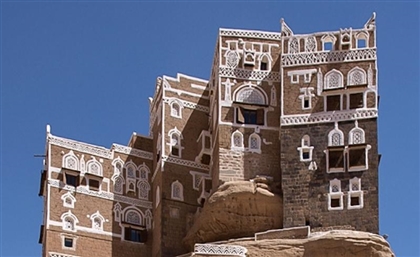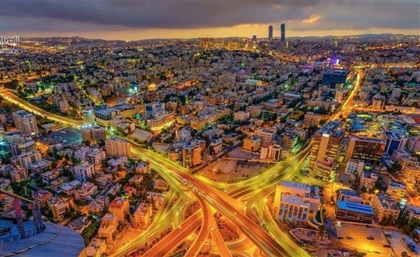Where Grief Is Staged in Marble: Alexandria’s Greek Cemetery
In Alexandria’s Greek Cemetery, pietàs weep, angels hush, and marble lovers embrace in an open-air museum of mourning.
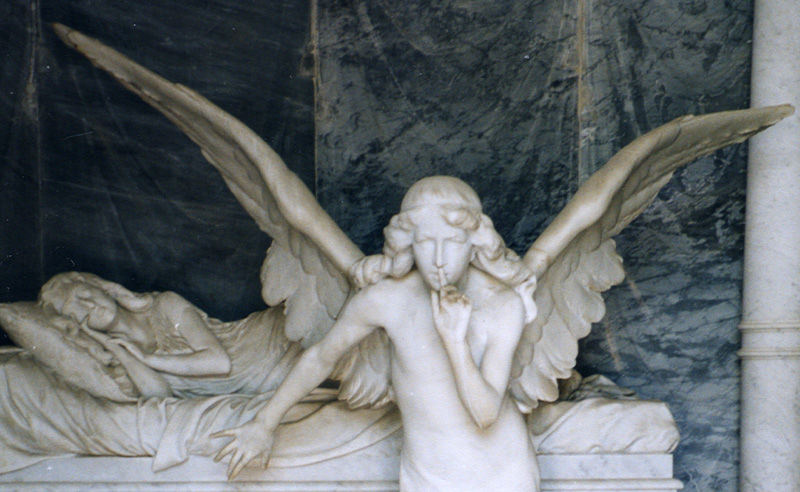
Not far from the racket of the Corniche and the half-hearted sprawl of modern apartment blocks, there exists a hush that can’t be solely attributed to the constant whoosh of the Mediterranean. It belongs instead to a cluster of Greek cemeteries that sit, discreet and sun-bleached, in the Chatby quarter of Alexandria.
To the casual observer, they might seem like any other burial relic—part of the city’s disarray, half-remembered and wholly ungoverned. But step past the rusted gates and you are no longer in Alexandria as it is. You are in Alexandria as it remembers.
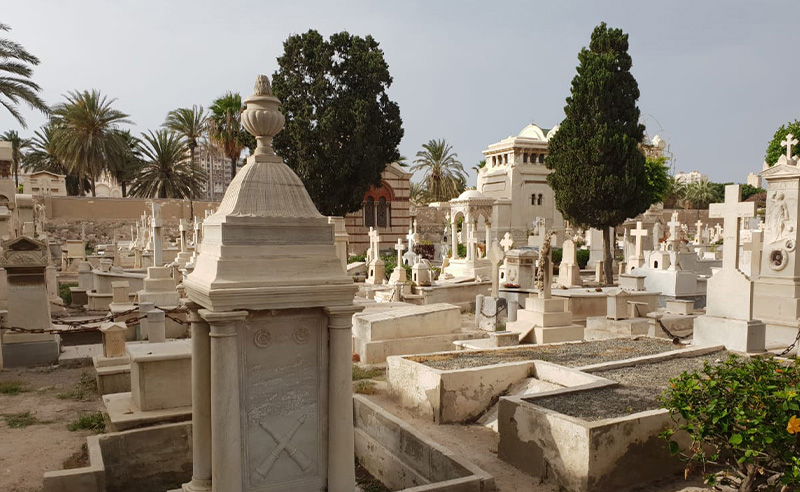
Here, marble angels do not soar, they kneel. Lovers do not hold hands, they collapse into each other. Mothers cradle. And across these sculpted gestures, one realises something fundamental: the Greeks of Alexandria, like their forebears from antiquity, never believed in death without theatre.
The cemeteries, formally established in the 19th century, part of the land grants of Muhammad Ali Pasha to the so-called “Seven Communities” of Alexandria, are not a singular plot but a mosaic of faiths: Jewish, Muslim, Anglican, Coptic Orthodox, Armenian, Latin Catholic, Protestant, and of course, Greek Orthodox. But it is the Greek sections, in particular, that really resist anonymity.
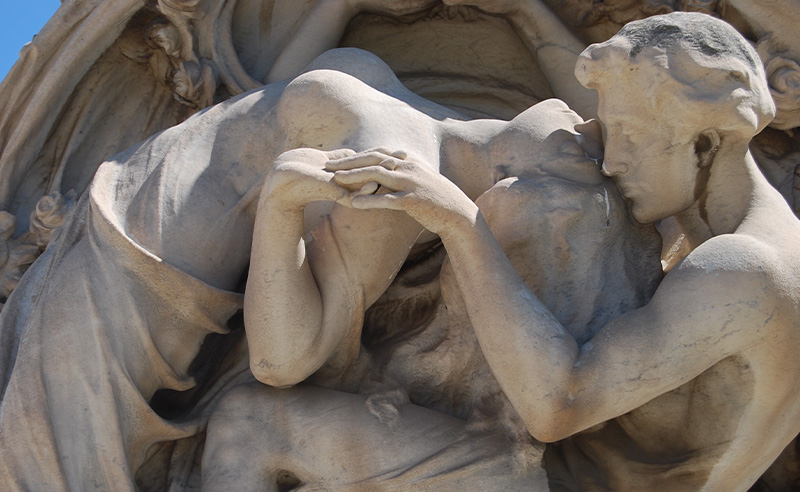
To walk through the marble alleys of this necropolis is to be flanked by statues in various states of lamentation, wings, robes, and limbs frozen mid-motion. The tombs do not just hold the dead, they stage them and remember them. They choreograph grief.
In one of the most arresting tombs lies Eirini, a young woman who died at just nineteen, daughter of the lumber baron Zourvadakis. She is sculpted mid-slumber, her body draped across a marble bed. Her name, meaning “peace” in Greek, is carved above her in solemn red letters. Standing at her feet is an angel, wings arched in quiet tension, one finger raised to her lips in a universal gesture—Shh. Because the living must not wake Eirini. The angel does not weep, but guards. The angel does not grieve, but commands a kind of sacred stillness.

Just a few tombs away, intimacy takes an even bolder form. Two figures, entwined in a moment that defies not only time but decorum, are caught in a moment of tenderness. The male figure holds the limp body of a woman, perhaps his beloved, perhaps death herself, and leans in. Unlike sanitized representations of love in death, those endless pietas and mourning nymphs, this sculpture makes no effort to disguise the visceral.
There is, of course, the more familiar form of mourning.Scattered across the cemetery grounds are multiple iterations of the Virgin Mary cradling the body of Christ. Some are highly stylised, others coarse and eroded by wind and time. One in particular, chiseled in a sandy limestone, features the Virgin not as a demure mourner but as a stoic, muscular presence. Her son’s body, limp and bare, lies across her lap like a broken offering. Her gaze is not upward but downward, as if interrogating the very meaning of sacrifice.

And while Alexandria’s once-thriving Greek population, who by the early 20th century numbered in the tens of thousands, has since dwindled to a whisper, the necropolis they left behind speaks still.
The names carved into these tombs echo through the city’s cultural memory: Antonios Salvagos, a co-founder of the National Bank of Egypt, Constantine Cavafy, the great poet who wandered these very avenues, now buried within walking distance of the angel of Eirini, John Antoniadis, who left his opulent palace and gardens to Alexandria’s municipality, now lies beneath a weeping Madonna. These were not marginal lives. They were the architects of Alexandria’s cosmopolitan soul.
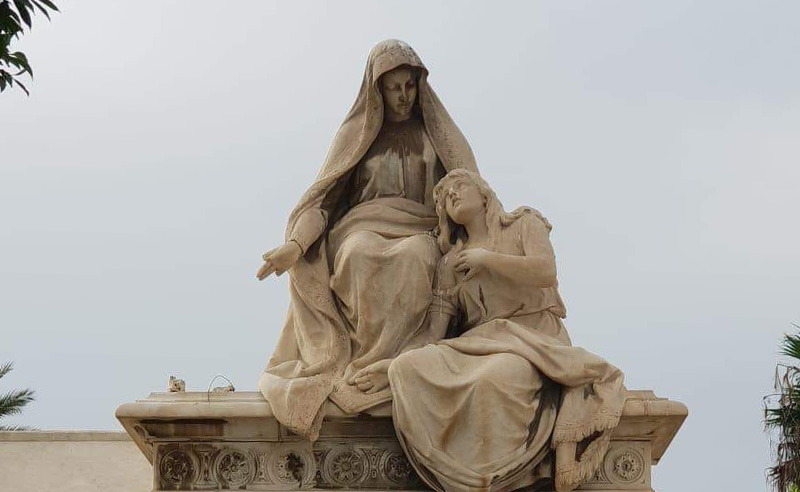
One could argue that these funerary sculptures are merely the aesthetic indulgences of a bourgeoisie, symptomatic of a European colonial presence trying too hard to leave a trace. But that would be too easy—and too modern a reading.
Alexandria has always been impermanent. Storms took her harbours, fires her libraries, politics her populations. The Greek community understood this more intimately than most. By the time many of these tombs were carved, the writing was already on the wall: nationalisation, Nasser, exile.
This, too, was part of the Greek ethos in Alexandria—an insistence on cultural contribution. In life, the Greeks built theatres and banks, factories and hospitals. In death, they built a city within a city: a necropolis.
- Previous Article Hilton Debuts Spark Brand in Makkah During 100-Hotel Saudi Expansion
- Next Article Six Unexpected Natural Wonders to Explore in Egypt
Trending This Month
-
Nov 29, 2025






